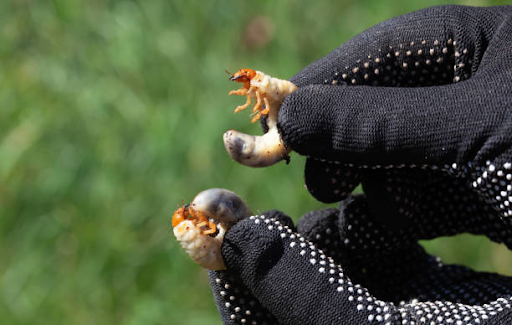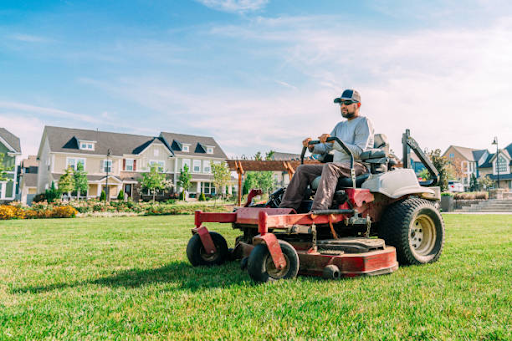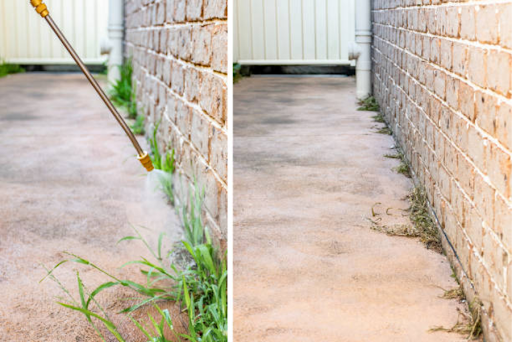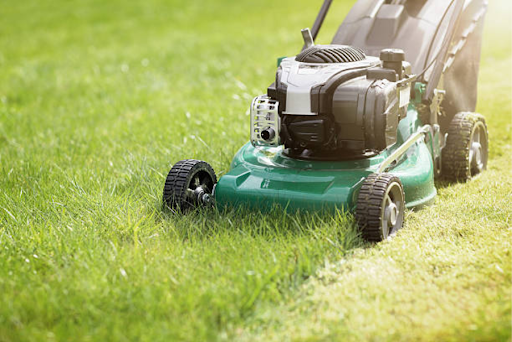Emerald Lawn-Scapes P.O. Box 174 Boonton, NJ 07005-1752
Creating a Pest-Free Outdoor Living Space: Tips and Tricks
Creating a beautiful, pest-free outdoor living space is more than just a dream—it’s an achievable reality for homeowners in northern New Jersey. With the right techniques, expert advice, and regular maintenance, you can transform your lawn, garden, and patio into a haven free from unwanted pests. In this blog post, we’ll dive into practical tips and tricks to keep your outdoor space thriving and pest-free while ensuring that your landscape looks as inviting as ever.
Understanding the Importance of a Pest-Free Environment
A pest-free outdoor living area not only enhances the aesthetics of your home but also provides several practical benefits:
- Enhanced Safety: A pest-free zone reduces the risk of bites, stings, and the transmission of diseases.
- Preserved Plant Health: Controlling pests helps prevent damage to your lawn, shrubs, and other plants.
- Increased Home Value: A well-maintained, pest-free outdoor area is attractive to potential buyers and increases your property’s curb appeal.
- Peace of Mind: Enjoying your outdoor living space without the nuisance of pests means more time to relax and entertain guests.
Achieving these benefits is possible when you integrate a variety of pest control methods into your regular lawn and landscape care routine.
Assessing Your Outdoor Space
Before diving into pest control techniques, it’s crucial to assess your outdoor living space:
- Identify Common Pests: Different areas of your property may attract different pests. For example, lawns might be prone to grubs and moles, while shrubs and garden beds can invite aphids and other insects.
- Evaluate Plant Health: Look for signs of pest damage, such as discoloration, wilting, or unusual growth patterns. Early detection can help you nip a potential pest problem in the bud.
- Consider Environmental Factors: Northern New Jersey’s climate, soil type, and seasonal changes all play a role in determining which pests are likely to be a problem and how you should address them.
By understanding your specific environment, you can tailor your pest control strategies to be both effective and sustainable.
Preventive Measures: The First Line of Defense
Prevention is always better than cure. Here are some effective strategies to prevent pests from taking over your outdoor living area:
1. Regular Lawn and Garden Maintenance
Keeping your landscape well-maintained is a critical step in pest control:
- Mowing and Edging: Regularly mow your lawn and edge your garden beds. This not only keeps the area looking neat but also reduces places where pests can hide.
- Pruning and Trimming: Proper pruning of shrubs and trees promotes airflow and reduces humidity, making your space less attractive to pests.
- Fertilizing and Watering: A healthy lawn is less susceptible to pest infestations. Use the right balance of water and nutrients to strengthen your plants.
For professional support on maintaining a pristine outdoor area, explore our lawn care services page to learn more about keeping your grass healthy and robust.
2. Organic and Chemical Pest Control Options
When it comes to pest control, there are both organic and chemical methods available:
- Organic Solutions: Consider using neem oil, garlic sprays, or insecticidal soap. These products are less harmful to the environment and beneficial insects.
- Chemical Treatments: For severe infestations, chemical pesticides might be necessary. Always follow the manufacturer’s instructions and consider hiring professionals if you’re unsure.
- Integrated Pest Management (IPM): This approach combines preventive measures, organic and chemical treatments, and continuous monitoring. IPM aims to reduce pest populations with minimal impact on the environment.
3. Barriers and Physical Controls
Physical barriers can be very effective in keeping pests away:
- Mulching: Use organic mulches like wood chips or straw to maintain soil moisture and temperature while deterring some insects.
- Fencing and Netting: Install barriers to protect your garden beds from larger pests such as deer or rabbits.
Also, be sure to treat the perimeter of your yard and fence line—fleas and ticks can jump up to 3–4 feet to reach a host. That’s why we treat 3–4 feet around the fence and recommend clearing any brush or overgrowth that's touching the fence to reduce hiding spots and entry points.
Traps: Set up traps for rodents and other small animals that might be attracted to your yard.
Landscaping Techniques That Deter Pests
Designing your landscape with pest control in mind can yield long-term benefits. Consider these landscaping tips:
- Plant Selection: Choose native and pest-resistant plants. Native plants are well-adapted to the local climate and often require less water and fertilizer, reducing the likelihood of attracting pests.
- Companion Planting: Some plants naturally repel pests when grown together. For instance, marigolds are known to deter aphids and whiteflies.
- Proper Spacing: Avoid overcrowding your plants. Proper spacing ensures better air circulation, which helps prevent the buildup of moisture and mold—a common breeding ground for pests.
- Soil Management: Regularly test your soil and amend it as necessary. Healthy, well-drained soil is less attractive to pests and promotes stronger plant growth.
For insights on maintaining healthy shrubs and more specific plant care advice, visit our shrub care page.
Seasonal Pest Control Strategies
Northern New Jersey experiences a variety of weather conditions that affect pest activity. Tailoring your pest control strategy to each season is key:
Spring
- Clean-Up: After winter, remove debris and fallen leaves that can harbor pests.
- Preventive Sprays: Apply organic pesticides early in the season to deter emerging pests.
- Soil Preparation: Aerate your lawn and prepare your soil for planting. This practice improves drainage and reduces conditions that attract pests.
Summer
- Regular Monitoring: Keep an eye out for signs of pest infestations as temperatures rise.
- Water Management: Water in the early morning to reduce humidity levels during peak pest activity.
- Natural Predators: Encourage beneficial insects such as ladybugs and lacewings, which naturally control pest populations.
Fall
- Leaf Management: Regularly clear fallen leaves and debris, as these can be breeding grounds for pests.
- End-of-Season Treatments: Apply treatments to protect perennials that will remain over winter.
- Preparation for Winter: Mulch and protect vulnerable plants to reduce winter damage and pest survivability
.
Winter
- Inspection: Winter is a good time for inspecting your outdoor space and planning for the next season.
- Pruning: Trim dead or damaged branches that might shelter pests.
- Planning Ahead: Consider what worked and what didn’t during the previous seasons, and adjust your strategy for the coming year.
Enhancing Your Outdoor Living Experience
A pest-free environment is just one piece of the puzzle when it comes to creating an inviting outdoor living space. Enhance your overall experience by focusing on these additional elements:
1. Comfortable Seating Areas
Invest in quality outdoor furniture that complements your landscape. Comfortable seating areas not only encourage relaxation but also highlight the beauty of your pest-free garden. Whether it’s a cozy patio or a backyard deck, the right furniture can transform your outdoor space into a perfect retreat.
2. Ambient Lighting
Outdoor lighting adds a magical touch to your evening landscape. Consider solar-powered options or low-voltage LED lights that accentuate your garden’s features without attracting unnecessary attention from pests.
3. Decorative Elements
Add decorative touches such as garden sculptures, water features, and vibrant flower beds. These elements not only boost your garden’s aesthetic appeal but also create natural habitats for beneficial wildlife that can help control pest populations.
4. Functional Areas
Designate specific zones in your garden for dining, play, or relaxation. A well-planned layout enhances usability and ensures that every part of your outdoor space is enjoyed to its fullest potential.
Expert Tips for Sustainable Pest Management
Incorporating sustainable practices into your pest management routine is not only good for your garden—it’s good for the environment. Here are some expert tips for maintaining sustainability:
1. Use Eco-Friendly Products
Opt for eco-friendly pest control products that are safe for your family, pets, and the environment. Many products on the market offer effective pest control without the harsh chemicals that can disrupt the local ecosystem.
2. Embrace Natural Predators
Encourage natural predators like birds, bats, and beneficial insects to take up residence in your garden. Installing birdhouses or bat boxes can help maintain a balanced ecosystem that naturally controls pest populations.
3. Recycle and Compost
Regularly compost garden waste and recycle materials where possible. Composting not only reduces waste but also produces nutrient-rich soil that can improve plant health and resistance to pests.
4. Educate Yourself and Your Neighbors
Staying informed about sustainable practices is key. Join local gardening groups, attend workshops, and share tips with neighbors. A community that works together is more effective in maintaining pest-free, sustainable outdoor living spaces.
For additional tips on maintaining your outdoor space, check out our care tips section for expert advice and regular updates.
Integrating Professional Services
While DIY methods are effective for minor pest issues, sometimes professional help is the best course of action. Professional lawn and shrub care services bring experience, expertise, and the latest technology to your doorstep:
- Customized Solutions: Professionals can tailor pest management strategies to the specific needs of your property.
- Regular Maintenance: Scheduled visits ensure that pest control is handled consistently, reducing the likelihood of future infestations.
- Comprehensive Care: From soil testing to targeted treatments, professional services offer a holistic approach that combines pest control with overall landscape maintenance.
If you’re looking for a trusted partner in maintaining your outdoor living space, feel free to contact us for more information on how we can help transform your yard into a pest-free sanctuary.
Real-Life Success Stories
Hearing about success stories from local residents can be incredibly inspiring. Consider the case of a homeowner in northern New Jersey who struggled with frequent pest invasions. By combining regular lawn care, strategic pruning, and eco-friendly pest control methods, they not only eliminated the infestation but also revitalized their entire garden. With professional advice and continuous maintenance, the homeowner now enjoys a lush, vibrant outdoor living area all year round.
Such testimonials are a testament to the fact that with a well-thought-out plan and the right expertise, creating a pest-free outdoor space is within reach.
Practical DIY Pest Control Tips
Here are some additional DIY tips to help you maintain a pest-free environment:
- Inspect Regularly: Walk around your property every week to identify potential pest issues before they escalate.
- Remove Debris: Clear away leaves, branches, and other organic matter that can harbor pests.
- Seal Entry Points: Check your home’s exterior for gaps or cracks where pests might enter and seal them properly.
- Rotate Crops: If you have a vegetable garden, rotating your crops each season can help break the cycle of pest infestations.
- Use Companion Planting: Plant herbs like basil and rosemary near your vegetables to naturally repel pests.
By integrating these habits into your routine, you can reduce the risk of pest problems while enjoying a healthier, more sustainable garden.
Maintaining a Long-Term Strategy
Creating a pest-free outdoor living space isn’t a one-time effort—it requires ongoing commitment. Here are strategies to ensure long-term success:
- Keep a Maintenance Calendar: Mark important dates for seasonal clean-ups, treatments, and inspections.
- Stay Updated on Best Practices: The field of pest control is continually evolving. Stay informed by reading expert blogs, attending webinars, and participating in local workshops.
- Monitor Changes: Over time, your landscape might evolve. Adjust your pest control strategies accordingly to accommodate new plants, seasonal changes, or unexpected pest behavior.
- Build a Relationship with Professionals: Establishing a relationship with a reliable lawn care or pest control service can provide peace of mind and ensure that any issues are promptly addressed.
Conclusion
A pest-free outdoor living space is the cornerstone of a healthy, inviting home environment. With the right combination of regular maintenance, sustainable practices, and expert advice, homeowners in northern New Jersey can enjoy lush lawns, thriving gardens, and a worry-free outdoor space. By adopting preventive measures, tailoring your approach to the seasons, and integrating professional services when necessary, you can create an environment that not only looks beautiful but also stands the test of time.
We invite you to explore our extensive range of services to help you achieve the perfect outdoor living space. Learn more about our lawn care services and shrub care for tailored solutions, and feel free to contact us for any questions or personalized advice. For ongoing advice and helpful hints, visit our care tips page regularly.
By focusing on prevention, proper maintenance, and a holistic approach to pest control, you can enjoy a vibrant, pest-free outdoor living space that enhances both your home’s beauty and your quality of life. Start implementing these tips today, and watch as your garden transforms into a sanctuary of natural beauty and tranquility.













